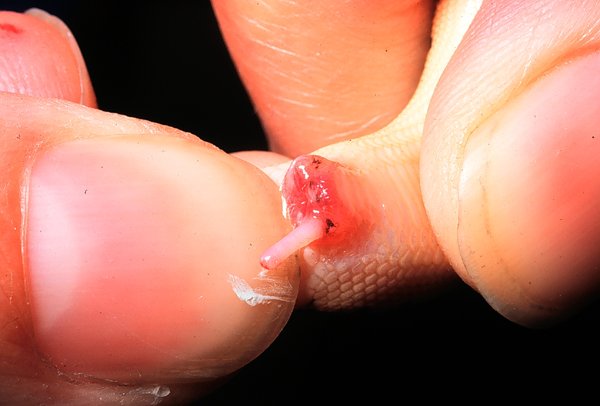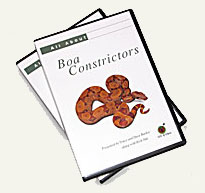How to sex baby sandboas...
Dear VPI,
I know you?re probably getting sick of all my Kenyan sandboa questions. I just have a quick question--my babies are two weeks old tomorrow and they?re sold to a friend of mine that owns a pet store. I want to keep a few for my own breeding stock.
The problem I am having is that while I have been probing snakes for about 4 years, I have never ever popped any. I know the technique but just never have done it.
Is there any other way I can sex these babies besides popping them? At the age they?re at now, it's very difficult just to look at there tails and tell, I can't probe them at this age can I? I don't think so but then I don't know for sure.
Thanks DB
Dear DB,
They can be probed, but it requires a very small probe and there's a danger that a small probe (in this case a tiny probe) can perforate tissue. Little sandboas can be popped easily and I'd recommend that you try.
The procedure is pretty well described in our article on sexing snakes at http://www.vpi.com/publications/determining_the_sex_of_snakes .
Sandboas can be sexed with pretty good certainty by just looking at them, the males do have longer tails, even at birth. This is the least certain method to sex them, but with sandboas there is a relatively high degree of success. The best way to do it is to place the babies on a pane of glass and look at them from underneath. DGB
 Popping a male sand boa baby: This is illustrated by the closeup view of the cloaca of a newborn East African sandboa being popped to determine sex. The hand on the right side of the photo holds the body, while the thumb of the hand on the left side of the photo applies pressure to the base of the tail. One of the tiny hemipenes is shown fully everted, demonstrating without a doubt that this is a male. More pressure would evert the second hemipenis, but this is unnecessary.
Popping a male sand boa baby: This is illustrated by the closeup view of the cloaca of a newborn East African sandboa being popped to determine sex. The hand on the right side of the photo holds the body, while the thumb of the hand on the left side of the photo applies pressure to the base of the tail. One of the tiny hemipenes is shown fully everted, demonstrating without a doubt that this is a male. More pressure would evert the second hemipenis, but this is unnecessary.
